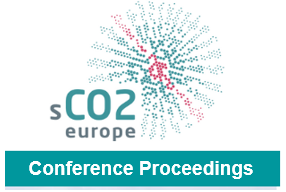Techno-economic analysis of sCO2 power cycle for coal-fired power system
Supercritical CO2 (sCO2) power cycles are considered one of the promising candidates to replace a steam Rankine cycle. The sCO2 power cycle has compact component size and minimum compression work because the supercritical state of CO2 has a density similar to that of a liquid and a viscosity similar to that of a gas. Considering these advantages, many countries and institutions around the world are conducting research on the sCO2 power cycle. However, most studies have focused on the thermal performance optimization of the power cycle, and an economic analysis and optimization is limited since experiences with sCO2 power cycle commercial operation are not abundant. Fortunately, previous researchers have proposed expected component cost correlations for sCO2 power cycle from cost data and literature survey [1]. In this paper, by utilizing the previously proposed component cost correlations, a sensitivity analysis of an sCO2 power cycle with respect to the system’s power output, cycle maximum temperature, fuel cost and cycle layout is conducted. From this study, a relation between the thermal performance optimization and the minimum cost is understood for the current technology level.
[1] Weiland, Nathan T., Blake W. Lance, and Sandeep R. Pidaparti. "SCO2 power cycle component cost correlations from DOE data spanning multiple scales and applications." Turbo Expo: Power for Land, Sea, and Air. Vol. 58721. American Society of Mechanical Engineers, 2019.
Vorschau

Zitieren
Rechte
Nutzung und Vervielfältigung:
Dieses Werk kann unter einer Creative Commons Namensnennung 4.0 Lizenz (CC BY 4.0)
Creative Commons Namensnennung 4.0 Lizenz (CC BY 4.0)
genutzt werden.
